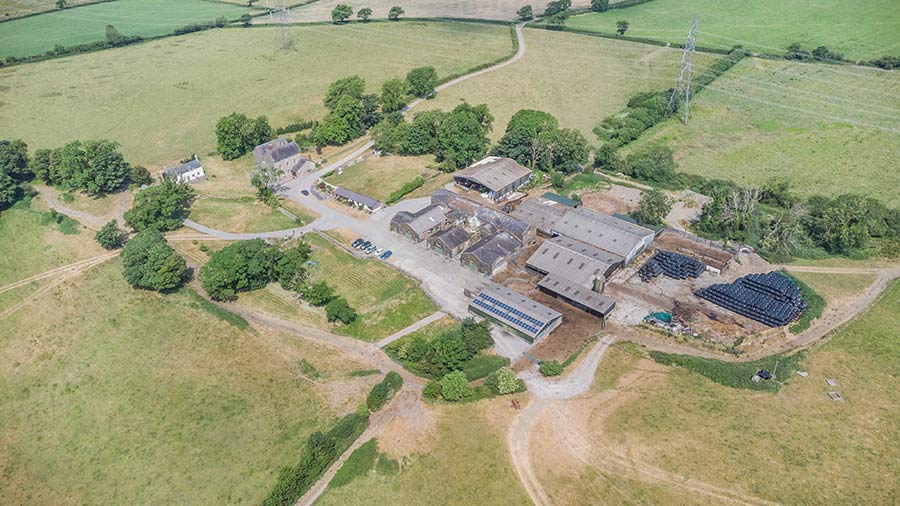Bare land in Wales sees strong demand from farmer buyers
 Trefenty Farm, St Clears © Saville
Trefenty Farm, St Clears © Saville Bare land in Wales is seeing strong demand, with farmers the main buyers.
While a number of significant equipped farms of scale have come to the market so far this year, the bare land market has provided most of the activity, say agents.
This has come about as farms restructure, with some expanding and others selling outlying land to buy closer to their base.
The usual reasons of retirement, death, debt and partnership splits or restructures to pay out family members have brought further blocks to the market.
See also: Farmland market 2023 – supply, demand, influences and values
Hugh O’Donnell, partner with Carter Jonas and based in the firm’s Brecon office, said that there was general confidence in the market, and there had been some very strong sales, with decent sized blocks of 60 to 70 acres of good silage ground making £20,000/acre-plus at auction.
“There are some micro markets like the Vale of Clwyd and Anglesey where there is always a good bare land market, with farmers wanting to expand,” he said.
“There has also been demand from those wanting to convert from beef and sheep to dairy, a trend that we have seen in north Wales for the past few years.”
Good-sized and well-equipped farms have also been launched, some with diversification enterprises already up and running, or with potential for alternatives.
At Monmouthshire-based Powells, associate rural surveyor Ed Fletcher commented that while the market was quieter than last year, there had been some strong results, with smaller acreages in demand from people moving out of Bristol to rural areas.
“Farmers are still the predominant buyers, but it’s localised. The best land is meeting very strong demand, especially where you have three or four neighbours interested.
“There’s also been a strong rental market for both bare and equipped land,” he said. This is usually the case for silage ground, but more recently there has been interest from over the border in Herefordshire for potato or maize land to rent.
Ed also expected more land would come up for rent over the next couple of years as owners chose to forego the paperwork complications of the changing support regime.
The market has been a busy one in Powys, Radnorshire and Brecon, said McCartneys’ managing partner Gareth Wall.
The main activity has been in blocks of land and with surprisingly strong demand for more marginal upland ground, again mainly to farmer buyers, he said.
“I’ve been doing a lot of valuations for fully equipped farms, many of which come to the market either side of the border,” said Gareth. “A lot of farmers are looking very hard at the profitability outlook and how they are going to be able to afford the higher interest rates.”
Outlook
While more land is expected to come on to the market later this year, it is a quieter outlook, say most agents, with higher interest rates, higher costs and the general economic background providing some caution.
Andrew Chandler, head of rural agency at Carter Jonas, said of the UK market as a whole: “The increasing cost of borrowing may also mean that more land comes to the market as businesses reassess their cashflows and release capital from existing assets.
“But, with a waiting pool of capital and demand showing no signs of slowing, we can expect that increased supply would be met with healthy interest.”
Scale, location and diversity are key to many buyers, said Andrew, but there are hotspots and not-spots, so valuations need to be realistic.
Welsh land stats
The first half of 2023 saw 8,350 acres publicly marketed in Wales, 33% more than during the same period in 2022, and 45% more than the 10-year average, says Savills.
In the year to the end of June, Grade 3 livestock land in Wales recorded the largest increase in value, said the firm, up 19.2% to average £6,886/acre.
The average value of prime arable land in Wales was put at £8,000/acre.
